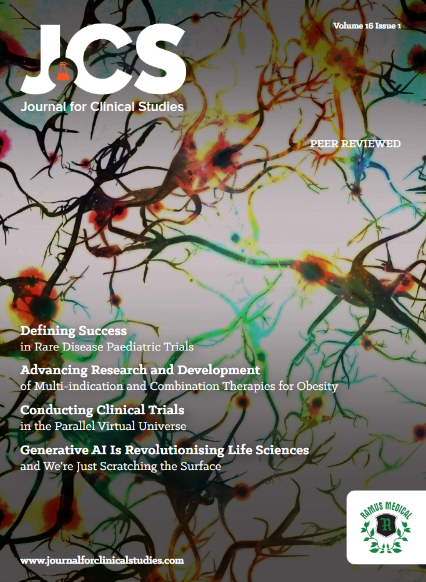The term “diabesity” has been used to refer to the twin pandemics of type 2 diabetes (T2D) and obesity.1 It was originally used after experiments showed that overfeeding healthy subjects to an overweight, but not obese, average body mass index (BMI) of 28 kg/m2 led to deterioration in fasting and postprandial (after meal) glucose tolerance. We now know that this glucose intolerance is related to insulin resistance, and it can be reversed by subsequent weight loss.2
The latest data indicate nearly 42 percent of the U.S. population is considered obese; 49 percent has either prediabetes or T2D; and more than 90 percent of patients diagnosed with T2D are overweight or obese.3,4 Here, we discuss the overlap in pathophysiology and treatment of diabetes and obesity, along with considerations for streamlining the clinical development of treatments that have therapeutic promise for both conditions.
Insulin Resistance, Adipocytokines and Inflammation
Obesity is a condition of energy surfeit, or too much energy, and is associated with expanded and ectopic adipose tissue stores. Excess fat, particularly visceral adiposity stored in abdominal tissue surrounding the intestines and ectopic fat in the liver, is associated with elevated adipose-derived metabolites that cause local and systemic low-grade inflammation. This is reflected in elevated levels of specific cytokines that are clearly associated with decreases in insulin action – specifically, insulin resistance, a hallmark phenomenon of diabesity that leads to a complex cascade of metabolic adjustments to physiologic stress, which in many individuals leads to eventual T2D.5
T2D occurs when insulin resistance (initially with compensatory insulin hypersecretion) and impaired insulin secretion (initially from pancreatic lipotoxicity, later from beta-cell loss due to inflammation, and other mechanisms) lead to loss of glucose homeostasis and frank hyperglycemia. Many people still think of T2D as a problem of “too much sugar,” but it has been established that T2D is more accurately thought of as a lipid disorder.6,7 The risk of lipotoxicity is increased in obese individuals where excess triglyceride handling – due to over-ingestion (eating) or production (de novo lipogenesis) – results in the accumulation of toxic lipid metabolic by-products. Lipotoxicity in the liver is a proximate cause of both fatty liver and hepatic insulin resistance, which together contribute to the risk of T2D.
Notably, not all patients treated for obesity may develop diabetes, and not all patients with T2D or pre-diabetes are obese. For example, there are significant portions of south-east Asian populations with insulin resistance, fatty liver and pre-diabetes who do not meet western obesity BMI criteria.















